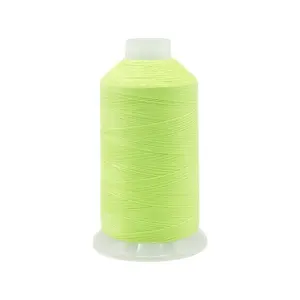Introduction to Threads Colours
Threads are the unsung heroes in the world of sewing, crafting, and textile design. They come in an astounding variety of threads colours, each capable of bringing a unique touch to any project. Whether you are a professional tailor or a hobbyist, understanding the different hues and types available can help elevate your crafting to new heights. The array of colours can influence designs, set moods, and even dictate the overall aesthetic of your finished product. This guide explores the various types, applications, features, and advantages of threads colours, helping you make the right choice for your needs.
Types of Threads Colours
When it comes to threads colours, you'll find a myriad of options categorized by their properties and uses. Here are some of the most common types:
- Polyester Threads: Known for their durability and vibrant colour retention, these threads are ideal for various fabrics.
- Cotton Threads: These offer a softer feel and are often preferred for quilting, available in a broad spectrum of colours.
- Nylon Threads: With high tensile strength, these threads are perfect for heavy-duty sewing requiring strong stitches.
- Silk Threads: Elegant and luxurious, silk threads are often reserved for high-end fabrics, available in rich, deep colours.
- Metallic Threads: These add a decorative flair with their shiny finish, ideal for embellishments and detailed stitching.
Applications of Threads Colours
The choice of threads colours extends beyond mere aesthetics; it significantly affects the application and functionality of your sewing projects. Below are some common applications:
- Fashion Design: Different threads colours can transform garments, highlighting seams or adding pops of colour for visual interest.
- Home Decor: From curtains to cushions, threads colours play a crucial role in enhancing overall room aesthetics and ambiance.
- Specialty Crafting: Scrapbooking, quilting, and embroidery all benefit from thoughtful colour choices that align with the theme of the project.
- Textile Art: Artists often use an assortment of threads colours to create stunning, intricate designs, bringing their vision to life.
Features of Threads Colours
The features of threads colours vary depending on the type of thread used in the project. Here are some key attributes to consider:
- Vibrancy: High-quality threads retain their colours, even after multiple washes, ensuring that your projects remain bright and bold.
- Fade Resistance: Many threads are treated to resist fading, making them ideal for projects intended for exposure to sunlight.
- Textural Variety: Threads can be found in different textures—smooth, textured, matte, or glossy—allowing for a multidimensional finish.
- Compatibility: Certain threads are designed to blend well with specific fabrics, providing a seamless look and function.
Advantages of Using Threads Colours
Choosing the right threads colours offers numerous benefits that go beyond mere visual appeal. Here are some advantages:
- Enhanced Creativity: A diverse palette encourages experimentation with colour combinations, inspiring innovative designs.
- Improved Durability: Certain threads, such as polyester and nylon, lend strength to your projects, ensuring they withstand wear and tear.
- Professional Finish: Using appropriate threads colours can elevate the quality and professionalism of the finished product.
- Desirability: A carefully matched colour scheme can increase the marketability and appeal of textile products.

















































